The Masonic Temple, at 888 Yonge Street, was constructed in 1917, during the chaotic days of the First World War. Today, the building is appreciated by those interested in the city’s architectural heritage, but judging by comments posted on the internet, it is viewed by some as an ugly structure of brick and limestone that is not worth preserving. Despite one’s view of the building, it has a rich heritage, and I believe that it is worthy of being saved from demolition. To aid in its preservation, in 1974 the Masonic Temple was designated a Heritage Property.
Designed in the Italian Renaissance Revival Style by architect W. J. Sparling, the six-storey structure contains an auditorium that has hardwood flooring and a decorated ceiling. It seats 1200 persons, including the wrap-around gallery. The Masonic Society (Freemasons) included the ballroom/concert hall in their new building as a means to raise revenue from rentals to support the costs of maintaining the premises.
John Ross Robertson (1841-1918) was a prominent Mason, and founder of the now defunct Toronto Telegram newspaper. He was one of the prime motivators behind the construction of the building, located on the northwest corner of Yonge Street and Davenport Road. When the Masons chose this site, a church was located on the property. It was estimated that the cost of the Temple would be $175,000, but by the time it was completed, the cost was $220,864. After the church on the site was demolished, construction began. The final stone for the new Temple was put in place on 17 November 1917 and the structure was consecrated with corn, oil, and wine. The first lodge meeting was held on 1 January 1918. On the upper floors, which were reserved solely for the use of the Masons, there were patterned tiled flooring and many Masonic carvings.
During the 1930s, the Masonic Temple was one of the most popular ballrooms in Toronto. Every New Year’s Eve, tickets disappeared long in advance of the date. Bing Crosby once crooned within its walls, and Frank Sinatra hosted an event there. Throughout the years, many famous entertainers have performed in the hall—Tina Turner, The Ramones, David Bowie, and Led Zeppelin, who held their first Toronto concert there in 1969. In 1970, it was leased by a company known as the “Rockpile.” During the 1980s, it was rented by various groups, but the income never exceeded the costs of maintaining the building. In 1998, the property was sold to CTV, for use as a TV studio. The show, “Open Mike with Mike Bullard” was broadcast from the premises. In 2006, it became home to Bell Media (MTV), but they departed in 2012.
During the 1950s, I was in the Masonic Temple on several occasions to attend events. The view from the gallery, looking down onto the stage area was quite impressive. I remember the ornate plaster trim around the auditorium and the ornate carvings that decorated the space. As a teenager, I considered any event held within the walls of the Temple to be a special occasion, especially since the restaurants on Yonge Street were within walking distance. In that decade, the “Pickin’ Chicken,” south of College Street, Fran’s at Yonge and College, and Basil’s Restaurant at Yonge and Gerrard, were the gastronomic highlights of the “the strip.” Walking south from Davenport and Yonge to below College Street was less of a problem for me in those years, especially when my teenage hunger could be satiated by “chicken in a wicker basket with fries” at the PIckin’ Chicken, a toasted club sandwich at Basil’s, or rice pudding at Fran’s. Julia Child, eat your heart out!
Yonge Street has greatly changed today, although I am not certain that the culinary level of the avenue has improved much. However, the Masonic Temple remains, proudly resisting the onslaught of the modern era. I sincerely hope that a modern role will be found for the building, and that it will not be demolished. It would be a pity to have its ornate facade become a mere shell to add dignity to another faceless high rise condominium of glass and steel, lacking any value beyond the price of the suites per square foot.
The Masonic Temple in 1918. In this year, Davenport Road, west of Yonge Street, remained a narrow roadway. The shop visible in the bottom, left-hand corner of the photo was demolished when the street was widened. Photo is from the City of Toronto Archives.
The Masonic Temple today.
The entrance to the Masonic Temple on Yonge Street, its ornate portico containing Doric columns.
Detailed carvings on the southeast corner of the building
Corinthian pilaster on the south facade of the Masonic Temple
To view the Home Page for this blog: https://tayloronhistory.com/
Links to other posts about the history of Toronto and its buildings:
https://tayloronhistory.com/2013/10/08/links-to-historic-architecture-of-torontotayloronhistory-com/
Links to posts about Toronto’s movie houses—past and present.
https://tayloronhistory.com/2013/10/09/links-to-toronto-old-movie-housestayloronhistory-com/
Recent publication entitled “Toronto’s Theatres and the Golden Age of the Silver Screen,” by the author of this blog. The publication explores 50 of Toronto’s old theatres and contains over 80 archival photographs of the facades, marquees and interiors of the theatres. It also relates anecdotes and stories from those who experienced these grand old movie houses.
To place an order for this book:
Theatres Included in the Book
Chapter One – The Early Years—Nickelodeons and the First Theatres in Toronto
Theatorium (Red Mill) Theatre—Toronto’s First Movie Experience and First Permanent Movie Theatre, Auditorium (Avenue, PIckford), Colonial Theatre (the Bay), thePhotodome, Revue Theatre, Picture Palace (Royal George), Big Nickel (National, Rio), Madison Theatre (Midtown, Capri, Eden, Bloor Cinema, Bloor Street Hot Docs), Theatre Without a Name (Pastime, Prince Edward, Fox)
Chapter Two – The Great Movie Palaces – The End of the Nickelodeons
Loew’s Yonge Street (Elgin/Winter Garden), Shea’s Hippodrome, The Allen (Tivoli), Pantages (Imperial, Imperial Six, Ed Mirvish), Loew’s Uptown
Chapter Three – Smaller Theatres in the pre-1920s and 1920s
Oakwood, Broadway, Carlton on Parliament Street, Victory on Yonge Street (Embassy, Astor, Showcase, Federal, New Yorker, Panasonic), Allan’s Danforth (Century, Titania, Music Hall), Parkdale, Alhambra (Baronet, Eve), St. Clair, Standard (Strand, Victory, Golden Harvest), Palace, Bedford (Park), Hudson (Mount Pleasant), Belsize (Crest, Regent), Runnymede
Chapter Four – Theatres During the 1930s, the Great Depression
Grant ,Hollywood, Oriole (Cinema, International Cinema), Eglinton, Casino, Radio City, Paramount, Scarboro, Paradise (Eve’s Paradise), State (Bloordale), Colony, Bellevue (Lux, Elektra, Lido), Kingsway, Pylon (Royal, Golden Princess), Metro
Chapter Five – Theatres in the 1940s – The Second World War and the Post-War Years
University, Odeon Fairlawn, Vaughan, Odeon Danforth, Glendale, Odeon Hyland, Nortown, Willow, Downtown, Odeon Carlton, Donlands, Biltmore, Odeon Humber, Town Cinema
Chapter Six – The 1950s Theatres
Savoy (Coronet), Westwood
Chapter Seven – Cineplex and Multi-screen Complexes
Cineplex Eaton Centre, Cineplex Odeon Varsity, Scotiabank Cineplex, Dundas Square Cineplex, The Bell Lightbox (TIFF)
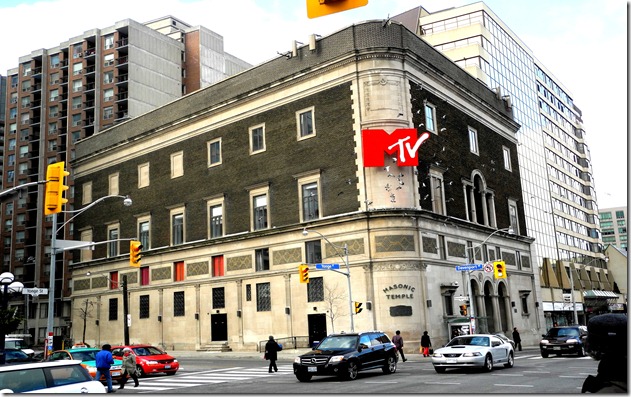
![f1231_it0755[1] 1918 f1231_it0755[1] 1918](https://tayloronhistory.com/wp-content/uploads/2014/09/f1231_it07551-1918_thumb.jpg)
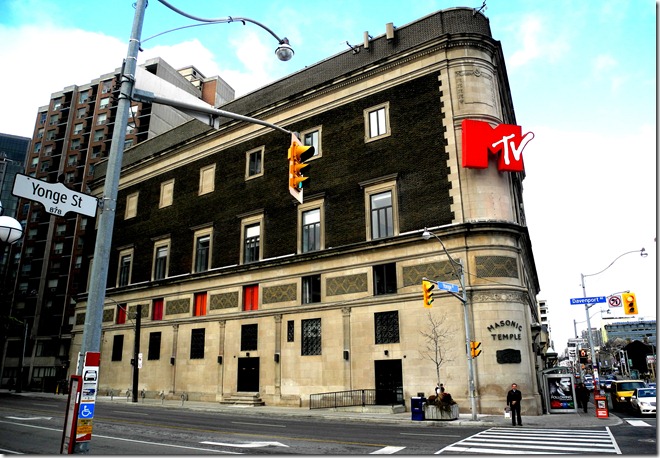
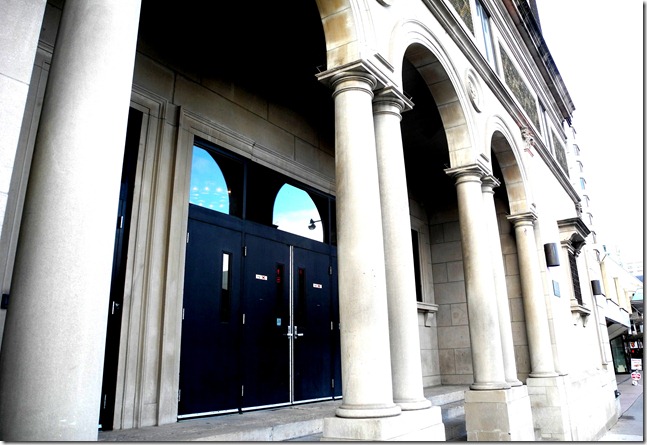
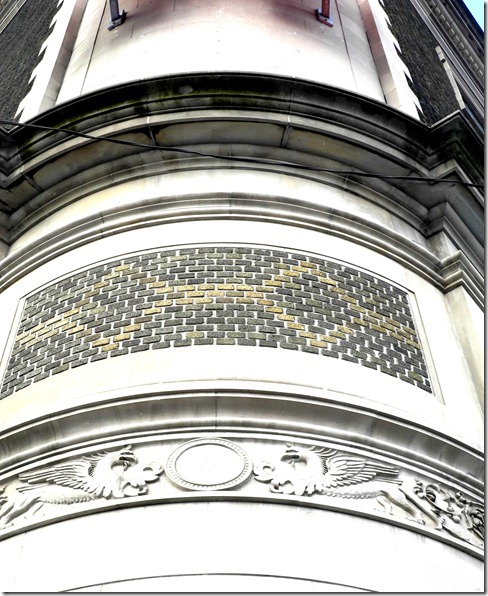

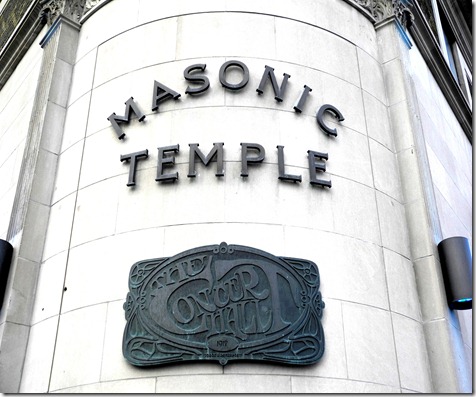
![cid_E474E4F9-11FC-42C9-AAAD-1B66D852[2] cid_E474E4F9-11FC-42C9-AAAD-1B66D852[2]](https://tayloronhistory.com/wp-content/uploads/2014/09/cid_e474e4f9-11fc-42c9-aaad-1b66d8522_thumb24.jpg)


One thought on “Toronto’s architectural gems—the Masonic Temple at Davenport and Yonge”